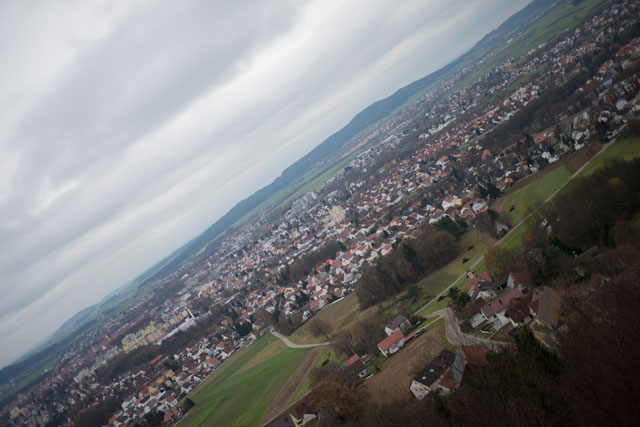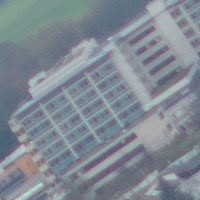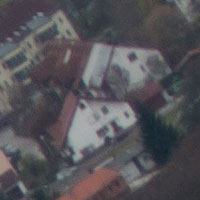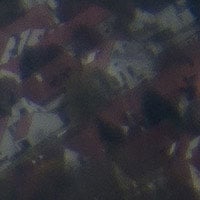Sigma 50mm f1.4 EX review
-
-
Written by Thomas
Quality
Testing: Longitudinal Chromatic Aberratio
n and focus shift
With lenses offering an aperture of f2.8 or larger I test for longitudinal CA (loCA, a.k.a. “axial color” or “bokeh CA”). The Sigma shows some magenta coloration in the foreground (left) and greenish hues in the background (right). This also shows up in real-life shots. This is not as pronounced as e. g. with the Nikon 50/1.4G or 58/1.4G. And by f5.6 the effect is gone. When stopping down sharpness in the foreground improves faster than in the background but this is not detrimental to correct focus.
Sigma 50mm f/1.4 Longitudinal Chromatic Aberration (loCA) |
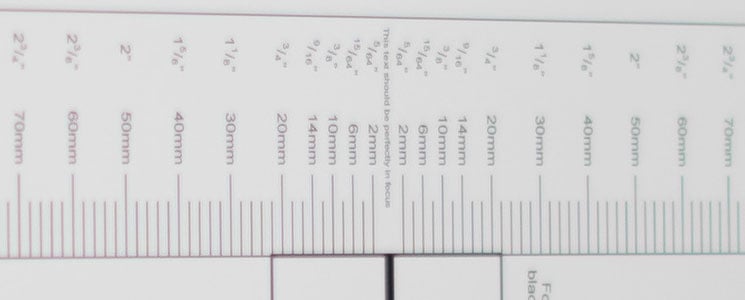 |
| 100% crop, 50mm, f1.4, left = foreground, right = background |
Sharpness and contrast
Let’s have a look at the theoretical performance (MTF-charts) compared to the Nikkor 50/1.4G first:
Sigma 50mm f/1.4 versus Nikon 50mm f/1.4G MTF | ||
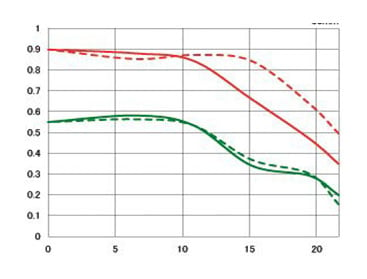 | 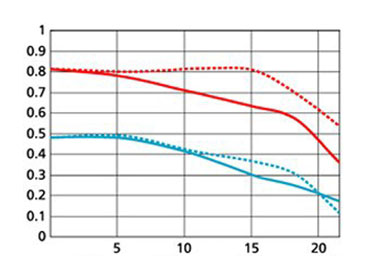 | |
| Sigma 50mm at f1.4 | Nikon 50mm at f1.4 | |
These charts show the lens-performance at the largest aperture f1.4. Higher values are better and the closer the dotted and continuous lines of each color are together the less astigmatism (= resolution depends on the orientation of the test-pattern) the lens has. The x-axis displays the distance from the optical axis (=center of the sensor) in mm. I’ll show you the real-life performance at 4 mm (center), 13 mm (APS-C-corner), and 20 mm (FF-corner) on a D800.
From the charts the new lens should perform on a higher level than the Nikon 50/1.4G regarding overall contrast and sharpness (contrast with finer details) in the inner 24mm diameter of the sensor. Outside of this circle the performance drops clearly. But looking at these charts you should always keep in mind that these are recorded at f1.4 – an aperture that is extraordinarily large. Let’s see how this theoretical performance translates into real life results in the sharpness test based on Siemens-stars – and how the performance increases when you stop this lens down.
What follows are near-center results (first column) followed by APS-C-corner results and FF-corner results on a D800. The D800 results from the APS-C-corner should be a very good approximation for performance on a 16MP APS-C sensor (like the D7000), because the pixel-pitch of both sensors are the same. But differences in the AA-filter and micro-lens-design of a D800 and a D7000 might yield different end-results.
Processing was done in Lightroom 4.4 from RAW at camera standard settings. Noise-reduction is set to 0, sharpening to 70/0.5/36/10, with no extra tone, color, or saturation-adjustment. White-balance was adjusted to a neutral white and I did some exposure compensation to make the brightness match. CA-removal is ON. Focus was optimized for center, APS-C-corner and FF-corner respectively at f1.4.
The following are all 100% crops!
Sigma 50mm f/1.4 with Nikon D800 100% crop from center |
Sigma 50mm f/1.4 with Nikon D800 100% crop from APS-C-corner |
Sigma 50mm f/1.4 with Nikon D800 100% crop from FF-corner | ||
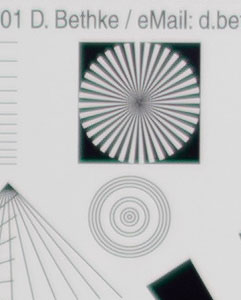 |
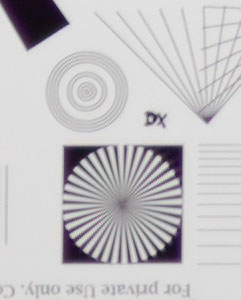 |
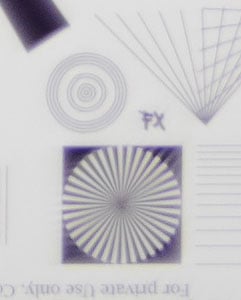 | ||
50mm, f1.4, 100 ISO |
50mm, f1.4, 100 ISO |
50mm, f1.4, 100 ISO | ||
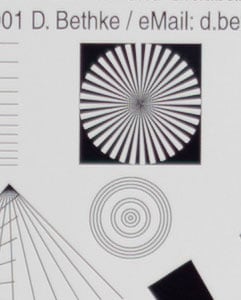 |
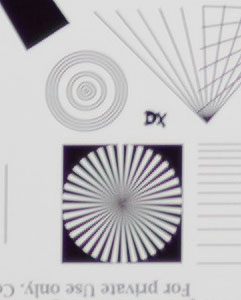 |
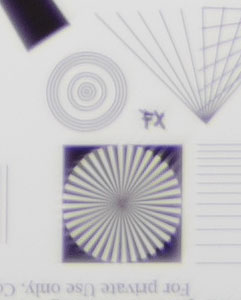 | ||
50mm, f2.0, 100 ISO |
50mm, f2.0, 100 ISO |
50mm, f2.0, 100 ISO | ||
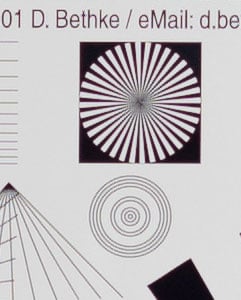 |
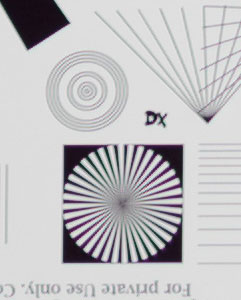 |
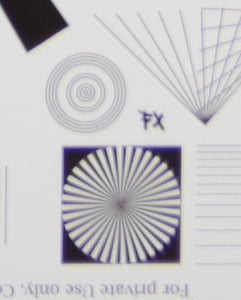 | ||
50mm, f2.8, 100 ISO |
50mm, f2.8, 100 ISO |
50mm, f2.8, 100 ISO | ||
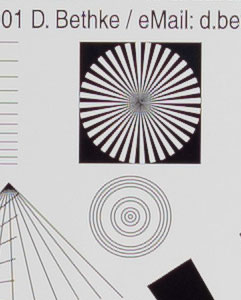 |
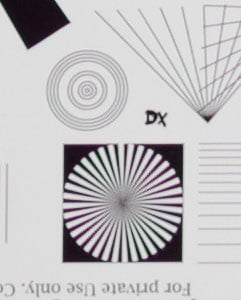 |
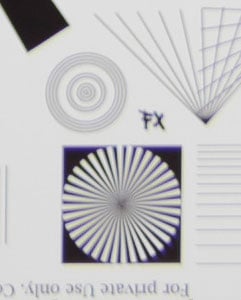 | ||
50mm, f4.0, 100 ISO |
50mm, f4.0, 100 ISO |
50mm, f4.0, 100 ISO | ||
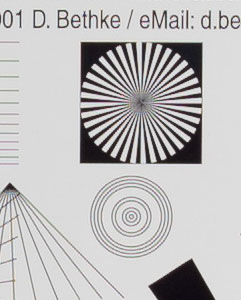 |
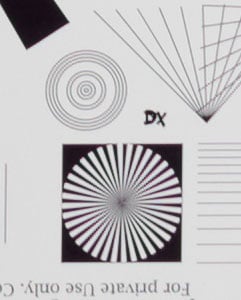 |
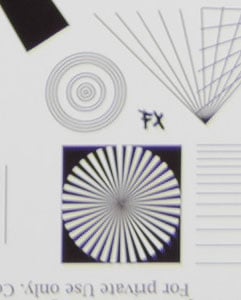 | ||
50mm, f5.6, 100 ISO |
50mm, f5.6, 100 ISO |
50mm, f5.6, 100 ISO | ||
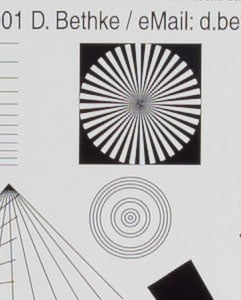 |
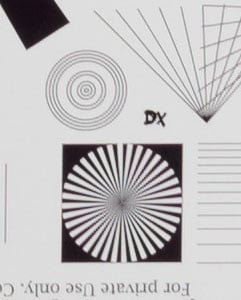 |
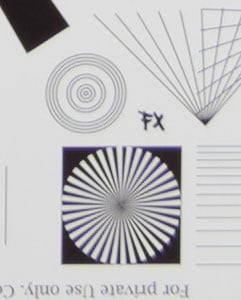 | ||
50mm, f8.0, 100 ISO |
50mm, f8.0, 100 ISO |
50mm, f8.0, 100 ISO | ||
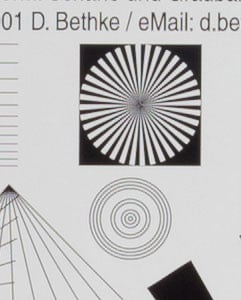 |
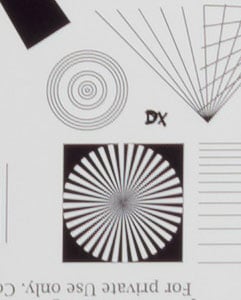 |
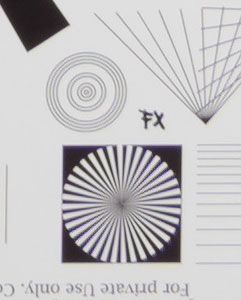 | ||
50mm, f11, 100 ISO |
50mm, f11, 100 ISO |
50mm, f11, 100 ISO |
These 100% crops directly from a 36MP D800 sensor show that this lens is a very good performer in the center with quite impressive resolution already at f1.4 and a contrasty rendering. Stopping down the lens exhibits a bit of focus shift (towards the background) that shows itself here in the switch from a green halo to magenta coloration which peeks at f2.8. Still the focus shift does not prevent the lens from becoming sharper and sharper with each stop so I would not deem it critical.
At the APS-C-corner the Sigma 50/1.4 shows almost no field curvature and only slight residual spherical aberrations at f1.4. There’s quite some resolving power even wide open. Stopping down to f2.8 reveals some astigmatism and at f4 results look pretty good.
The FF-corner shows quite some field-curvature and renders with very low contrast albeit you can see a lot of detail through the haze. Stopping down helps a lot if you need sharp and contrasty corners. At f4 the haze is pretty much gone and at f8 the FF-corner puts in a very satisfying performance.
Diffraction is setting in at f11. So for your landscape shots f8 would be your best bet. Distortions are minimal.
Following is a direct comparison to the Nikon AF-S 50mm f1.4 at f1.4:
Nikon 50mm f/1.4 with Nikon D800 100% crop from center |
Nikon 50mm f/1.4 with Nikon D800 100% crop from APS-C-corner |
Nikon 50mm f/1.4 with Nikon D800 100% crop from FF-corner | ||
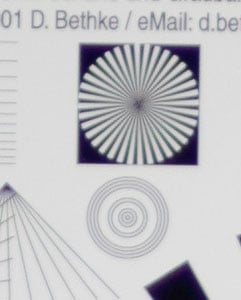 |
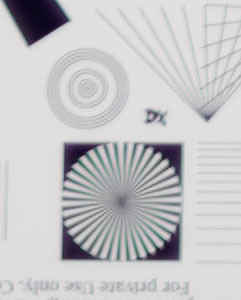 |
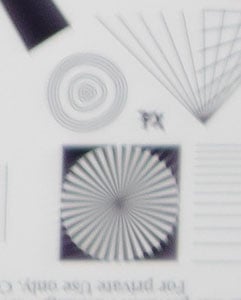 | ||
50mm, f1.4, 100 ISO |
50mm, f1.4, 100 ISO |
50mm, f1.4, 100 ISO |
Sigma 50mm f/1.4 with Nikon D800 100% crop from center |
Sigma 50mm f/1.4 with Nikon D800 100% crop from APS-C-corner |
Sigma 50mm f/1.4 with Nikon D800 100% crop from FF-corner | ||
 |
 |
 | ||
50mm, f1.4, 100 ISO |
50mm, f1.4, 100 ISO |
50mm, f1.4, 100 ISO |
Performance at large distances
The Siemens-star test-targets are shot at a distance of 40x focal length (i.e. at 2m for 50mm f.l.). But performance of lenses also depends on the shooting distance. Therefore I do another series of test-shots of a landscape dubbed the “Unremarkables” where you can measure distances in km, not meter. I use this scene to show you how the lenses perform when almost everything is at infinity – but unfortunately I’m dependent on some good or at least acceptable weather. As November 2013 was one of the dullest Novembers in history I couldn’t get a sunny, contrasty shot here. But still you can easily see how the lens performs. I set White Balance to a standard daylight value to make them comparable across lenses shot at the same day and also try to make exposure comparable. There’s no tinkering with vignette-control so you see it here as it is produced by the lens. Focus was acquired at the largest aperture in contrast-based AF and not changed for other apertures.
You can click on each image to access the large original. Please respect our copyright and only use those images for personal use.
The main image shows the complete scene at maximum aperture to give you an impression of the angle of view and to judge vignetting. This is followed by one row of 100% crops at f1.4, f2.8, and f5.6 each from the middle, the APS-C-corner and the right FF-corner.
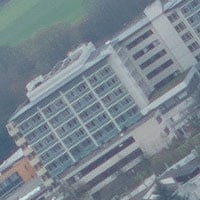 |
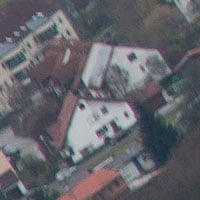 |
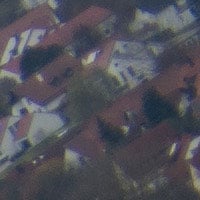 | ||
f2.8, 100 ISO, center |
f2.8, 100 ISO, APS-C-corner | f2.8, 100 ISO, FF-corner | ||
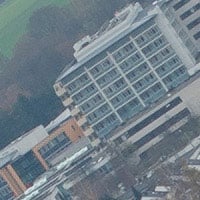 |
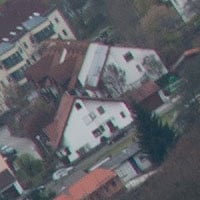 |
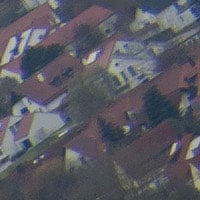 | ||
f5.6, 100 ISO, center |
f5.6, 100 ISO, APS-C-corner | f5.6, 100 ISO, FF-corner | ||
Performance is pretty impressive even wide open just right into the FF-corner – albeit with some hefty vignetting. Stopping down to f2.8 brings center sharpness to a very good level but the APS-C-corner does not really get up to the same level of performance. The FF-corner (again) is pretty good. At f5.6 you get very good sharpness across the frame.
So with a distant target the lens seems suffer from some field-curvature at the APS-C-corner but shows a very nice performance in the FF-corner. This is just the opposite of what the lens shows at closer distances where the APS-C-corner performs better than the outer areas of the full-frame sensor.
All-in-all the lens shows an impressive performance near and far even on the very critical 36MP sensor of a D800. Just keep in mind that the lens has a slight weakness at the borders of the APS-C/DX image circle at far away targets. Stop down to f5.6 and you can enjoy crisp images all across the frame of a full-frame body.
Flare/ghosting
Shooting normal or wide-angle lenses always runs the risk of catching a strong light-source like the sun shining directly into the lens. This could produce strange colorful ghosts-images or reduce contrast considerably through flare and glare.
The appearance of flare and ghosting depends on factors like the aperture and the angle of the light hitting the lens. So to judge the proclivity of a lens for these artifacts I went through a series of well calculated shots against a strong light source to provoke glare and ghosting.
| Flare/Glare: shot with Sigma AF 50/1.4 at f8 on a D800 |
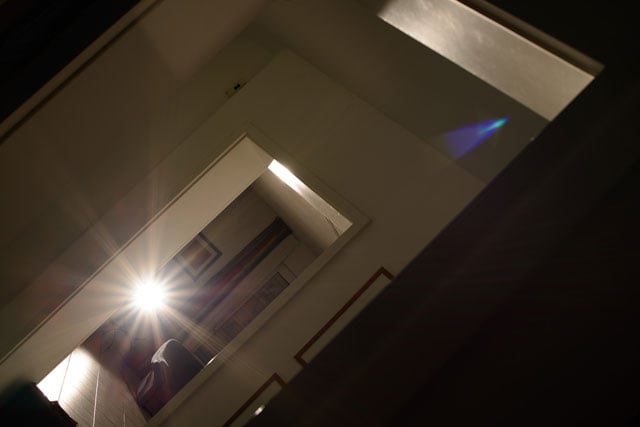 |
| click on the image to access the large original |
The image shows one of the worst flares that I could produce with this lens. Of 19 shots under similar conditions 4 showed comparable flare and 10 others showed weaker flare and some less pronounced ghosts. Fortunately there’s little veiling glare in these images and the blacks are really black.
But in some situations you can get a nasty reddish streaking effect with the light source just outside the image frame (the lens-shade was mounted):
| Streaking: shot with Sigma AF 50/1.4 at f8 on a D800 |
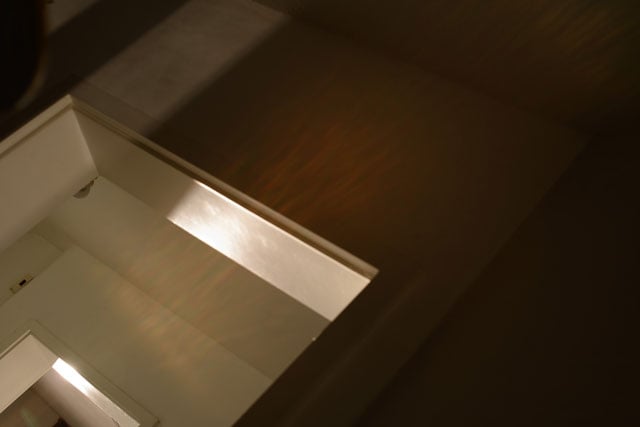 |
| click on the image to access the large original |
Now let’s check out some Sigma 50mm f1.4 sample images, or if you’ve seen enough, head over to my verdict.
